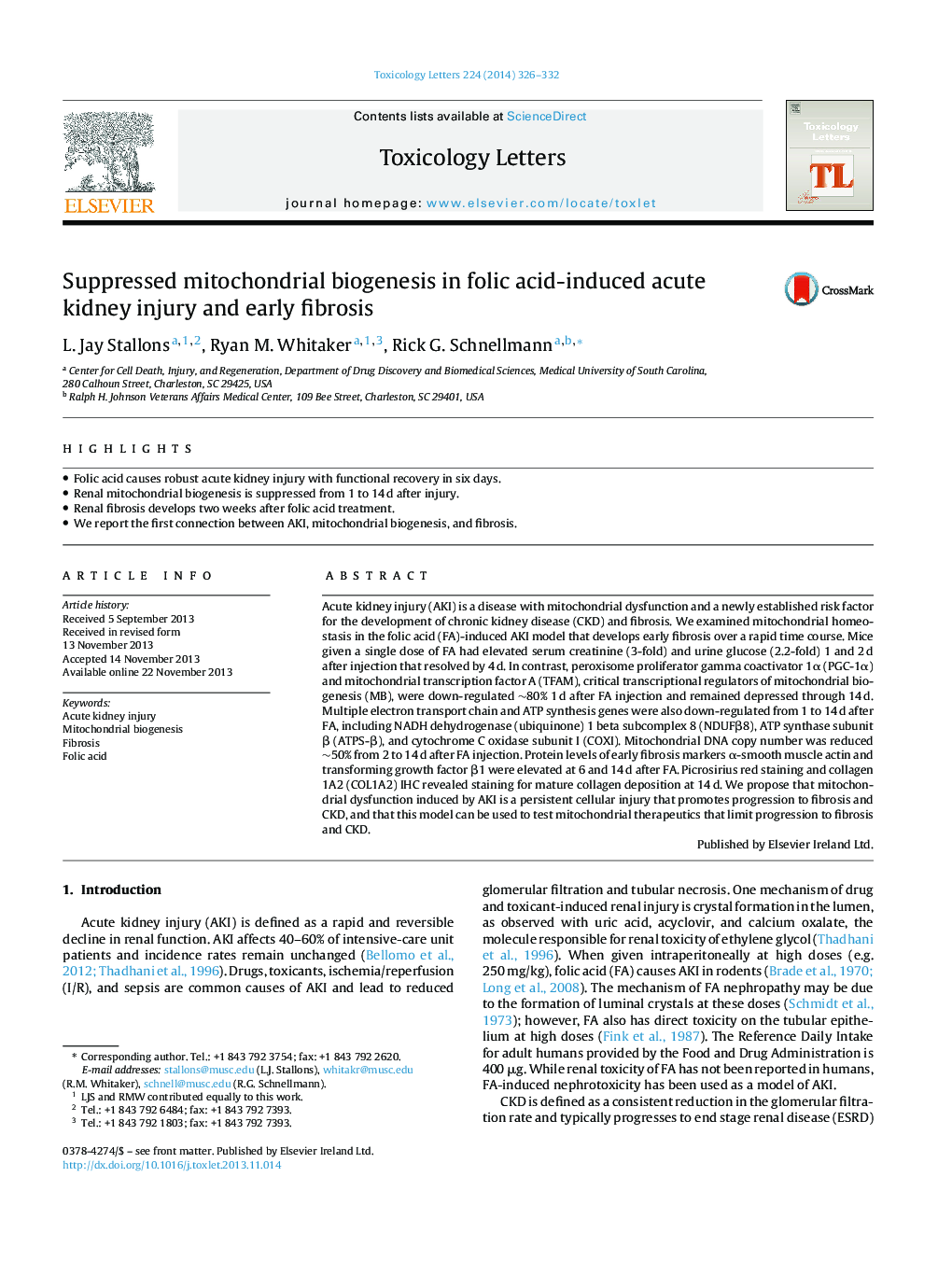| Article ID | Journal | Published Year | Pages | File Type |
|---|---|---|---|---|
| 5860444 | Toxicology Letters | 2014 | 7 Pages |
â¢Folic acid causes robust acute kidney injury with functional recovery in six days.â¢Renal mitochondrial biogenesis is suppressed from 1 to 14 d after injury.â¢Renal fibrosis develops two weeks after folic acid treatment.â¢We report the first connection between AKI, mitochondrial biogenesis, and fibrosis.
Acute kidney injury (AKI) is a disease with mitochondrial dysfunction and a newly established risk factor for the development of chronic kidney disease (CKD) and fibrosis. We examined mitochondrial homeostasis in the folic acid (FA)-induced AKI model that develops early fibrosis over a rapid time course. Mice given a single dose of FA had elevated serum creatinine (3-fold) and urine glucose (2.2-fold) 1 and 2 d after injection that resolved by 4 d. In contrast, peroxisome proliferator gamma coactivator 1α (PGC-1α) and mitochondrial transcription factor A (TFAM), critical transcriptional regulators of mitochondrial biogenesis (MB), were down-regulated â¼80% 1 d after FA injection and remained depressed through 14 d. Multiple electron transport chain and ATP synthesis genes were also down-regulated from 1 to 14 d after FA, including NADH dehydrogenase (ubiquinone) 1 beta subcomplex 8 (NDUFβ8), ATP synthase subunit β (ATPS-β), and cytochrome C oxidase subunit I (COXI). Mitochondrial DNA copy number was reduced â¼50% from 2 to 14 d after FA injection. Protein levels of early fibrosis markers α-smooth muscle actin and transforming growth factor β1 were elevated at 6 and 14 d after FA. Picrosirius red staining and collagen 1A2 (COL1A2) IHC revealed staining for mature collagen deposition at 14 d. We propose that mitochondrial dysfunction induced by AKI is a persistent cellular injury that promotes progression to fibrosis and CKD, and that this model can be used to test mitochondrial therapeutics that limit progression to fibrosis and CKD.
